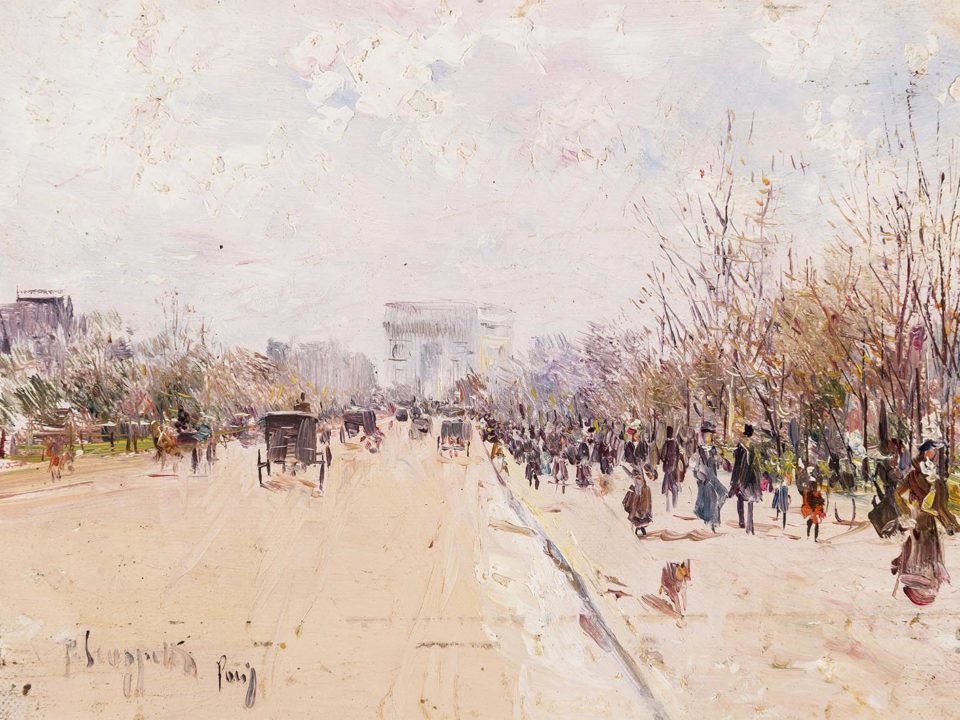Pietro Scoppetta was born in Amalfi on 15 February 1863. He initially began his studies in architecture before abandoning them to follow lessons in painting given by Giacomo Di Chirico. Abandoning his studies entirely, he moved to Naples in 1891 where he began to exhibit at various shows organized by the local cultural organization, demonstrating his talent above all for scenes of his native Amalfi coast and the Mulini valleys. Between 1889 and 1890 he is commissioned along with other artists to fresco the walls of the café Gambrinus, an elegant cultural meeting point in the Neapolitan capital. In the same period, he worked as an illustrator for several magazines owned by the publishing house, Treves (‘Cronacapartenopea’, ‘La tavolarotonda’ and ‘L’Illustrazione Italiana’).
Despite his commercial and critical success, in 1897 he decided to leave Italy and spend time in London and Paris. In the French capital, where he lived between 1897 and 1903, he immersed himself amongst the dense ranks of Neapolitan painters attracted by the bourgeois offerings of the Belle Époque (Lionello Balestrieri, Arnaldo De Lisio, Ulisse Caputo, Raffaelle Ragione, Vincenzo La Bella). From this French experience he draws important elements from his interaction with the works of the Impressionist painters that he expresses in his own personal expression, and is able to formulate a concise and luminous painterly technique. This period in Paris also determined a profound change in the themes of his paintings: the pastoral depictions of his previous period are replaced with those of bourgeois life in which the artist highlights elements of optimism as well as tension for the future that is more suited to his own character.
After 1910 he left Paris to move to Rome where he spent long periods staying at the home of his friend, Pietro Carrara and his wife, Maria Valdambrini. In the final years of his life he dedicated himself to poetry, publishing a collection, Rhythms of the heart, in 1919 under the pseudonym, Pictor Petrus.
He died in Naples on 9 November 1920.

